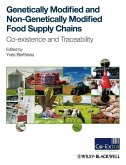Food products have always been designed, but usually not consciously. Even when design has been part of the process, it has often been restricted to considerations of packaging, logos, fonts and colors. But now design is impacting more dramatically on the complex web that makes up our food supply, and beginning to make it better. Ways of thinking about design have broad applications and are becoming central to how companies compete. To succeed, food designers need to understand consumers and envision what they want, and to use technology and systems to show they can deliver what has been envisioned. They also need to understand organizations in order to make innovation happen in a corporation. The authors of this book argue that design has been grossly underestimated in the food industry. The role of design in relation to technology of every kind (materials, mechanics, ingredients, conversion, transformation, etc.) is described, discussed, challenged and put into proper perspective. The authors deftly analyze and synthesize complex concepts, inspiring new ideas and practices through real-world examples. The second part of the book emphasizes the role of innovation and how the elements described and discussed in the first parts (design, technology, business) must join forces in order to drive valuable innovation in complex organizations such as large (and not so large) food companies. Ultimately, this groundbreaking book champions the implementation of a design role in defining and executing business strategies and business processes. Not only are designers tremendously important to the present and future successes of food corporations, but they should play an active and decisive role at the executive board level of any food company that strives for greater success.
Dieser Download kann aus rechtlichen Gründen nur mit Rechnungsadresse in A, B, BG, CY, CZ, D, DK, EW, E, FIN, F, GR, HR, H, IRL, I, LT, L, LR, M, NL, PL, P, R, S, SLO, SK ausgeliefert werden.









